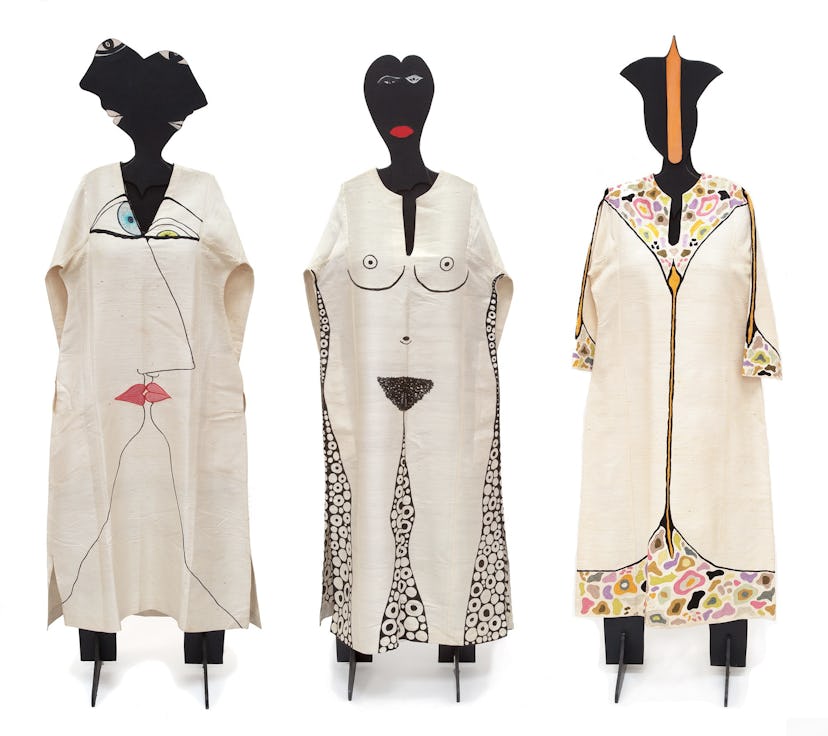Remembering Huguette Caland, the Late Pioneering Artist Whose Work Was Just as Fascinating as Her Life

As is so often the case with 20th-century artists who happen to be women, the Lebanese artist and fashion designer Huguette Caland wasn’t recognized until the late stages of her career—only several years before she died this week, at the age of 88. Then again, Caland, who was never consistently represented by a gallery, was always ahead of her time: She defied conventions in both her career and her personal life, transforming the latter into playful and erotic sculptures, paintings, and drawings characterized by simple, free-flowing lines. (Though perhaps no medium showcases Caland’s style and attitude better than her caftans, which are about as playfully explicit as you can get.)
But it isn’t just Caland’s decades’ worth of pioneering work that’s been overlooked; there’s also the equally fascinating story of her life. Born in 1931, Caland was the only daughter of Bechara el-Khoury, Lebanon’s first post-independence president—not that that stopped her from marrying and having three children with the nephew of one of his political rivals. In 1970, when their children had reached their early teens, she left them behind for Paris, where she fell in love with the Romanian artist George Apostu and brought her signature erotic lens to just about every medium—one of which was caftans. Caland wore the hand-embroidered tunics that she designed daily, including on a day that she went to buy her husband a tie at Pierre Cardin‘s store in Paris. There, she caught the admiring eye of Cardin himself, who was so struck by Caland that they collaborated on an haute couture collection and more than 100 designs.
In 1987, Caland once again relocated—this time to Los Angeles, in part because “California Land” reminded her of “Caland.” Soon, her home turned into a salon for fellow artist types like Ed Moses, establishing her reputation as a ’90s iteration of Gertrude Stein. And yet, even as she received star treatment in Lebanon, and regularly exhibited her work in Paris and Beirut, her work was rarely displayed in the U.S.
Huguette Caland, *Untitled*, 1972. Ink on paper.
Huguette Caland, *Tendresse (Tenderness)*, 1975. Featured in Caland’s first solo museum exhibition at the Tate St. Ives, 2019.
Then, at age 85, Caland became the breakout star of the Hammer Museum’s 2016 biennial. The show devoted an entire room to her work, which was essentially a mini retrospective. “We’re trying to correct an oversight,” curator Aram Moshayedi told W at the time. He wasn’t the only one: In the years to follow, the Centre Pompidou purchased her work, which was also featured in the 2017 Venice Biennale. Erykah Badu was photographed wearing one of Caland’s caftans, and a book on Caland’s early career was finally translated to English from French.
Huguette Caland, *Bribes de corps*, 1973. Featured in Caland’s first solo museum exhibition at the Tate St. Ives, 2019.
Huguette Caland, *Parenthèse II (Parenthesis II)*, 1971. Featured in Caland’s first solo museum exhibition at the Tate St. Ives, 2019.
This year, the Tate St. Ives mounted her first solo museum exhibition in the U.K., which closed several weeks before she died. By the time the show opened in May, she’d already been back at home in Beirut for five years, having at long last left California Land behind.
Related: Two Geezers Steal the Show from the Kids at “Made in L.A.,” the Hammer Museum’s Biennial